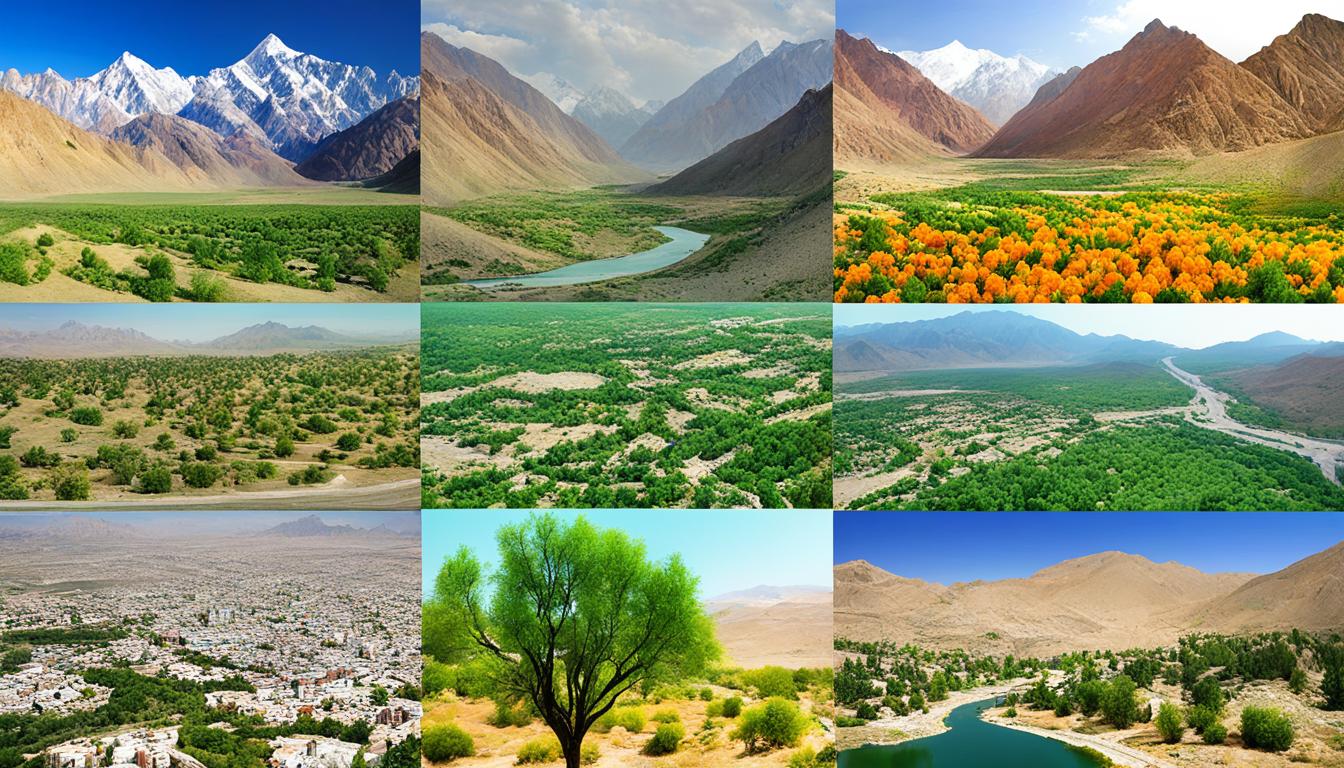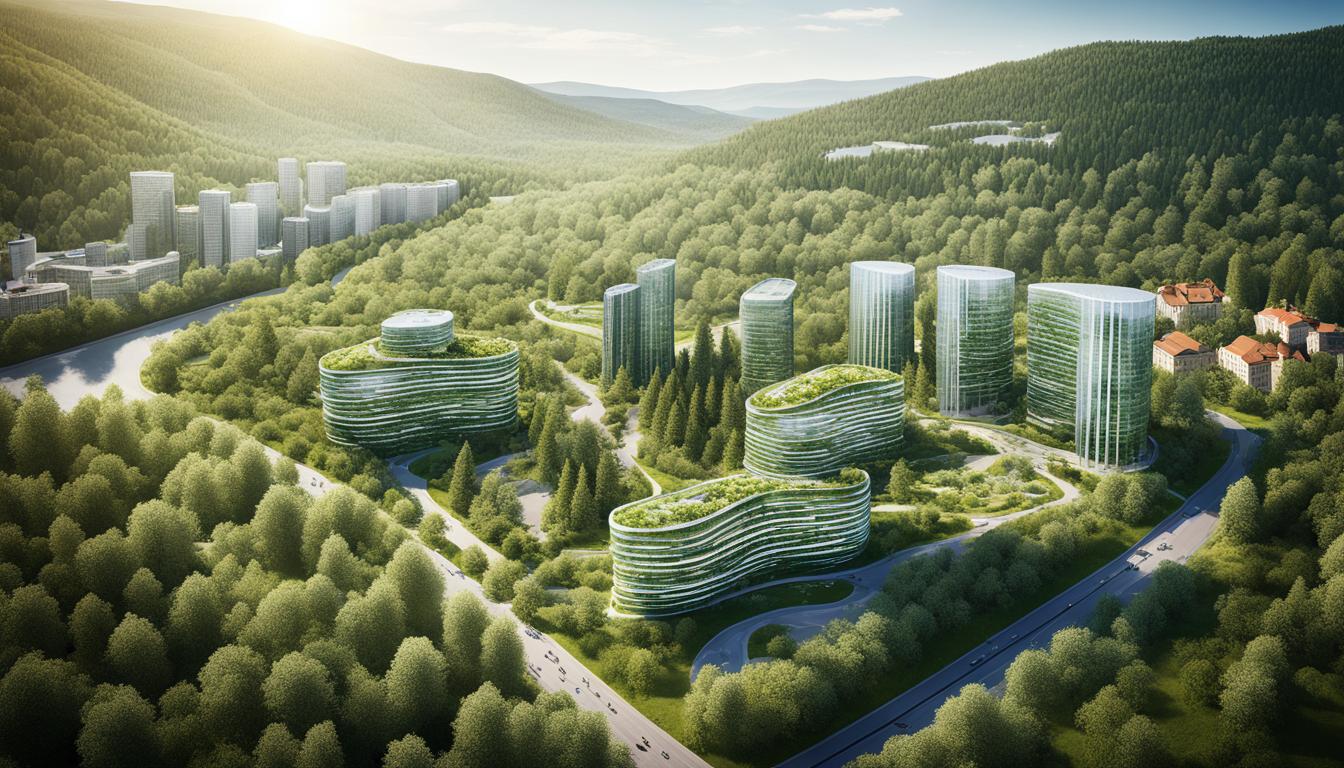Bahamas Sacred Natural Sites and Biodiversity
Did you know that the Bahamas is home to over 700 islands and cays? This archipelago, surrounded by coral reefs and extensive sand flats, boasts a stunning natural beauty that attracts visitors from around the world. But what many people may not realize is that the Bahamas is not just a tourist destination, it is also a haven for biodiversity and a leader in conservation efforts.
Key Takeaways:
- The Bahamas is known for its rich biodiversity and stunning natural beauty.
- The country has several sacred natural sites that hold cultural and spiritual significance.
- Conservation efforts in the Bahamas focus on protecting these sites and promoting sustainable development.
- Local communities play a crucial role in the conservation of sacred natural sites and biodiversity.
- The Bahamas offers eco-tourism attractions that allow visitors to experience its unique wildlife and natural landscapes.
The Importance of Biodiversity in The Bahamas
The Bahamas is a haven for diverse terrestrial and aquatic species, boasting a remarkable abundance of marine life and unique ecosystems, including mangroves and coral reefs. This archipelago is renowned for its natural heritage sites and the critical role they play in sustaining ecosystems and livelihoods. Recognizing the significant impact of biodiversity on food security, agriculture, and environmental stability, The Bahamas prioritizes conservation efforts to ensure the long-term sustainability of its natural resources.
Bahamas biodiversity conservation encompasses a wide range of species, promoting the health and resilience of ecosystems. From vibrant coral reefs to thriving wildlife habitats, the preservation of this rich biodiversity is key to maintaining ecological balance and supporting local communities. By safeguarding natural heritage sites, The Bahamas continues to protect the invaluable natural resources that contribute to its unique charm and environmental integrity.
A Diverse Marine Life
The Bahamas’ crystal-clear waters are home to an array of marine species, including vibrant coral reefs teeming with life. These coral reefs act as nurseries for numerous fish species, supporting the local fishing industry and providing vital habitats for marine biodiversity. The protection and conservation of these delicate ecosystems ensure the sustainability of these underwater havens, promoting the continued interactions between different species and preserving their habitats.
Unique Terrestrial Ecosystems
In addition to its marine wonders, The Bahamas boasts unique terrestrial ecosystems, such as mangroves and natural forests. Mangrove forests serve as natural buffers against storms and hurricanes, protecting coastal communities from potential damage. They also provide a vital habitat for various marine species, acting as nurseries and offering protection during their early life stages. Preserving these mangrove forests is integral to safeguarding both the shoreline and the biodiversity that relies on them.
Conserving Natural Resources for Future Generations
The Bahamas recognizes that the sustainable use and conservation of its natural resources are essential for the well-being of both present and future generations. Through its commitment to biodiversity conservation, the country aims to balance environmental protection with economic development. This approach ensures the preservation of The Bahamas’ natural heritage sites, ecological wealth, and countless opportunities for eco-tourism attraction, benefiting both local communities and visitors.
Conservation Efforts in The Bahamas
The Bahamas is dedicated to protecting its sacred natural sites and preserving its rich biodiversity through various conservation initiatives. The Bahamas National Trust, in collaboration with other local organizations, plays a pivotal role in managing and safeguarding these sites, ensuring their ecological value and promoting sustainable development.
The country also embraces eco-tourism as a means to provide sustainable opportunities for visitors to experience the unique wildlife and natural beauty of the Bahamas while supporting local communities. These eco-tourism attractions not only showcase the incredible biodiversity of the islands but also contribute to the conservation efforts and raise awareness about the importance of wildlife preservation.
“Conservation is not just about protecting the natural environment; it’s also about creating a balance between environmental preservation, economic growth, and community well-being.”
Eco-tourism attractions in the Bahamas offer visitors a chance to explore the diverse ecosystems, vibrant coral reefs, and enchanting marine life. Snorkeling, diving, nature walks, and boat tours provide immersive experiences that allow visitors to appreciate the wonders of this unique environment.
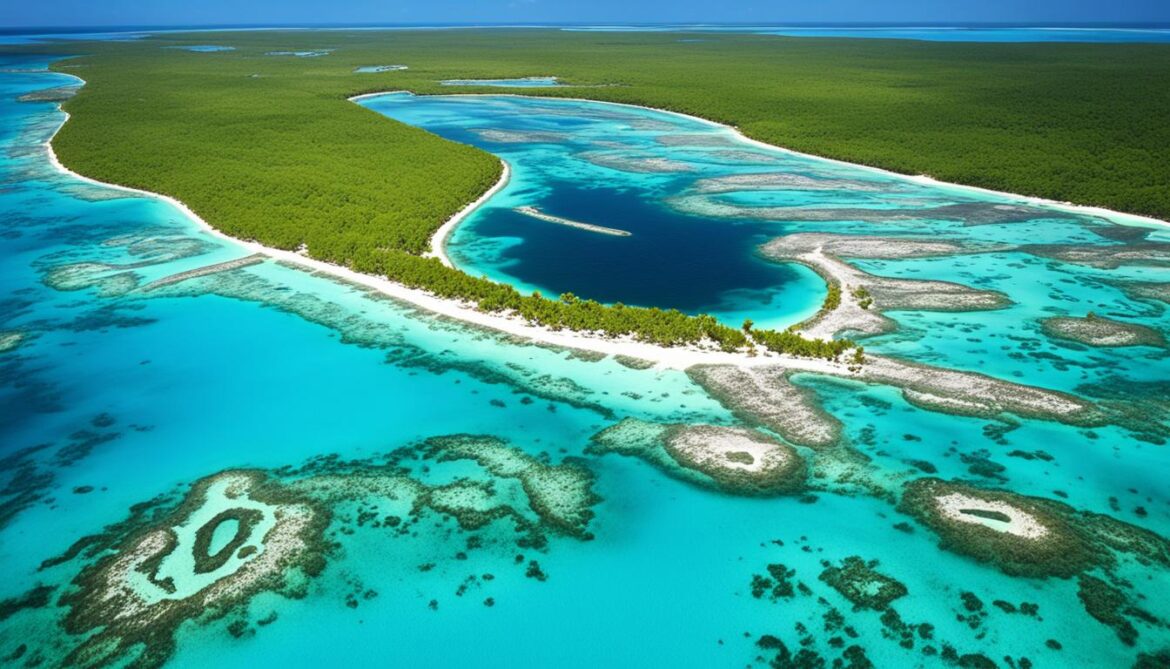
| Eco-Tourism Attractions | Description |
|---|---|
| Diving and Snorkeling | Discover the mesmerizing underwater world of the Bahamas with its vibrant coral reefs and diverse marine species. |
| Nature Walks | Explore the lush forests, mangroves, and wetlands of the Bahamas while spotting a variety of bird species and other wildlife. |
| Boat Tours | Cruise through the crystal-clear waters, visit secluded islands, and encounter marine creatures like dolphins and turtles. |
The eco-tourism industry in the Bahamas provides not only memorable experiences for visitors but also contributes to the local economy and supports conservation efforts. By choosing to explore these attractions, visitors actively participate in the protection and preservation of the Bahamas’ natural wonders.
Preserving Wildlife Habitat
Conservation efforts in the Bahamas aim to protect and restore critical wildlife habitats, ensuring the survival of unique species found within these fragile ecosystems. The Bahamas National Trust works alongside local communities and stakeholders to establish and manage protected areas and national parks, safeguarding the natural heritage sites and habitats.
Through the collaborative efforts of conservation organizations and the commitment of the Bahamian people, the Bahamas strives to preserve its biodiversity for future generations. By balancing eco-tourism opportunities with effective conservation measures, the Bahamas sets an example for sustainable development that benefits both the environment and the local communities.
Protecting Sacred Natural Sites
Sacred natural sites in The Bahamas hold deep cultural and spiritual significance. These sites are safeguarded under national laws and regulations to ensure their preservation for future generations to appreciate and cherish. The commitment to environmental protection and sustainable development is a shared endeavor between the government of The Bahamas and its local communities. By striking a balance between economic growth and conservation, the country is pioneering a holistic approach to sustainable development.
The conservation of sacred natural sites serves as a cornerstone of The Bahamas’ sustainable development strategy. It recognizes the intrinsic value of these sites and acknowledges the importance of their continued existence. By integrating environmental protection into the fabric of sustainable development, The Bahamas is building a resilient future that harmonizes the needs of both people and the planet.
The government of The Bahamas, together with local communities, is championing initiatives that prioritize the conservation of sacred natural sites. Their collective efforts are channelled towards creating a harmonious coexistence between human activities and the fragile ecosystems that surround them. These sacred spaces are a testament to the rich cultural heritage of The Bahamas and provide invaluable opportunities for spiritual reflection, education, and connection with nature.
“The conservation of sacred natural sites is not just an environmental imperative but a cultural responsibility as well.”
Through rigorous environmental protection measures, The Bahamas is bolstering the long-term viability of its sacred natural sites. These measures encompass comprehensive policies, stringent regulations, and robust enforcement mechanisms. By safeguarding these sites, The Bahamas is ensuring the preservation of its natural heritage for generations to come.
The commitment to sustainable development goes beyond legislation. The Bahamas is fostering strong collaborations with local communities, international organizations, and other stakeholders to drive comprehensive conservation efforts. This collaborative approach integrates traditional knowledge and modern techniques, allowing for a more holistic and effective outcome.
The governmental support and active engagement of local communities create a shared sense of accountability for the preservation of sacred natural sites. This collaborative framework helps to align economic growth with environmental protection, ensuring that development is pursued in a sustainable and ecologically conscious manner.
| Benefits of Protecting Sacred Natural Sites | Actions for Environmental Protection |
|---|---|
Cultural preservation
|
Sustainable land-use planning and management
|
Ecological conservation
|
Environmental education and awareness
|
Economic opportunities
|
Collaboration and partnerships
|
The benefits of protecting sacred natural sites extend beyond cultural preservation. Conservation efforts generate economic opportunities, particularly through eco-tourism attractions that showcase the unique natural beauty of The Bahamas. The alternative livelihoods created in local communities contribute to sustainable development while reducing reliance on resource-intensive industries.
The collaboration and partnerships fostered by The Bahamas strengthen the conservation initiatives in place, promoting knowledge-sharing, capacity-building, and leveraging international expertise. Through this joined-up approach, The Bahamas elevates its environmental protection measures, advancing sustainable development and becoming a global role model for biodiversity conservation.
By protecting sacred natural sites, The Bahamas is not only safeguarding its environmental heritage but also nurturing the deep-rooted connections between its culture, spirituality, and ecological systems. The government’s unwavering commitment to sustainable development ensures a future where economic prosperity and environmental protection coexist harmoniously, setting a precedent for the rest of the world to follow.
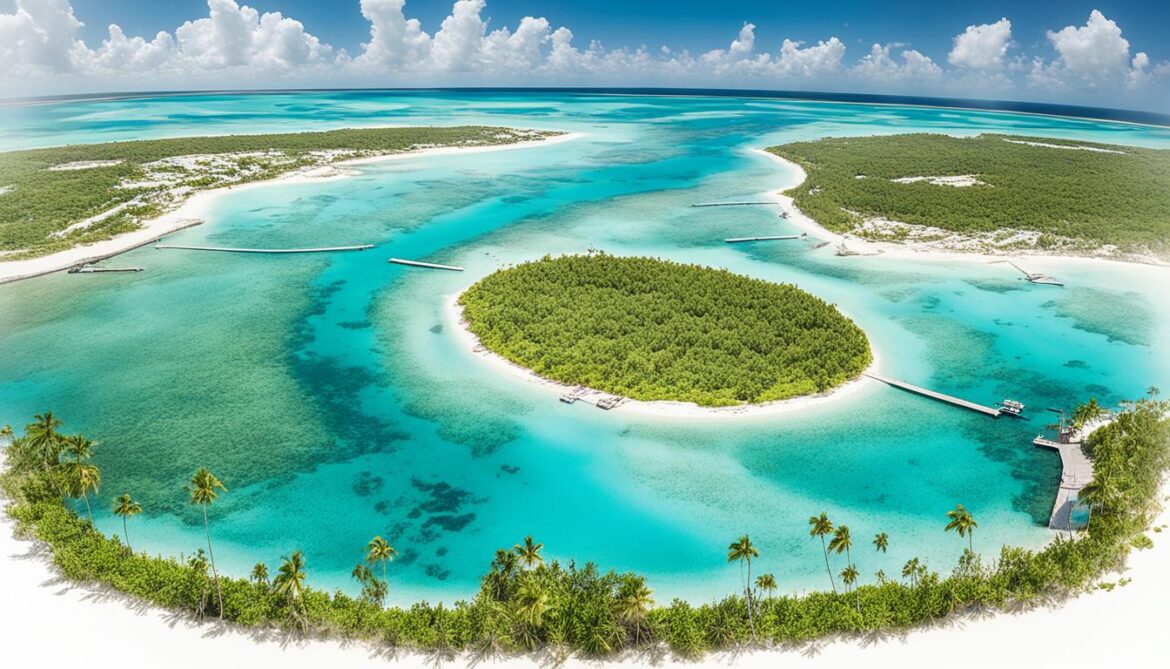
The Role of Local Communities in Conservation
Local communities in The Bahamas play a crucial role in the conservation of Bahamas natural heritage sites and biodiversity. They have traditional knowledge and practices related to these sites, which are passed down through generations. This deep connection enables them to understand the importance of protecting and preserving the natural resources that make the Bahamas such a unique and precious destination.
Many community-driven conservation projects have been initiated to empower local communities and involve them in decision-making processes. These initiatives promote a sense of ownership and stewardship among the residents, leading to effective conservation outcomes. By actively participating in the protection of Bahamas eco-tourism attractions, such as coral reefs, mangroves, and endemic species, local communities contribute to the long-term sustainability of these natural treasures.
The involvement of local communities extends beyond conservation efforts. They also play a vital role in educating visitors about the importance of sustainable practices and the significance of Bahamas natural heritage sites. Through engaging storytelling and cultural experiences, locals share their knowledge and traditions, fostering a deeper understanding and appreciation for the country’s biodiversity.
Moreover, local communities form partnerships with government agencies, non-profit organizations, and international stakeholders to enhance conservation efforts. This collaboration ensures that decisions regarding the management and protection of natural resources are made collectively, taking into account the needs and perspectives of all stakeholders. By working together, these partnerships create a solid foundation for the sustainable development of The Bahamas.
“Our local communities are the custodians of our natural heritage. Their active involvement and traditional wisdom are invaluable in safeguarding Bahamas natural sites and preserving biodiversity for future generations.” – Minister of Environment, The Bahamas
Through their engagement and dedication, local communities act as ambassadors for conservation, inspiring and encouraging visitors to embrace sustainable practices. Their efforts contribute to the overall well-being of The Bahamas, ensuring that both present and future generations can continue to enjoy the remarkable beauty and ecological richness of this Caribbean paradise.
The Role of Local Communities in Conservation – Overview
| Key Points | Benefits |
|---|---|
| Traditional knowledge and practices passed down through generations | Preservation of cultural heritage |
| Community-driven conservation projects | Effective protection of natural resources |
| Collaboration with government agencies and stakeholders | Inclusive decision-making processes |
| Educational roles and cultural experiences | Promotion of sustainable tourism |
| Partnerships for sustainable development | Collective management of natural resources |
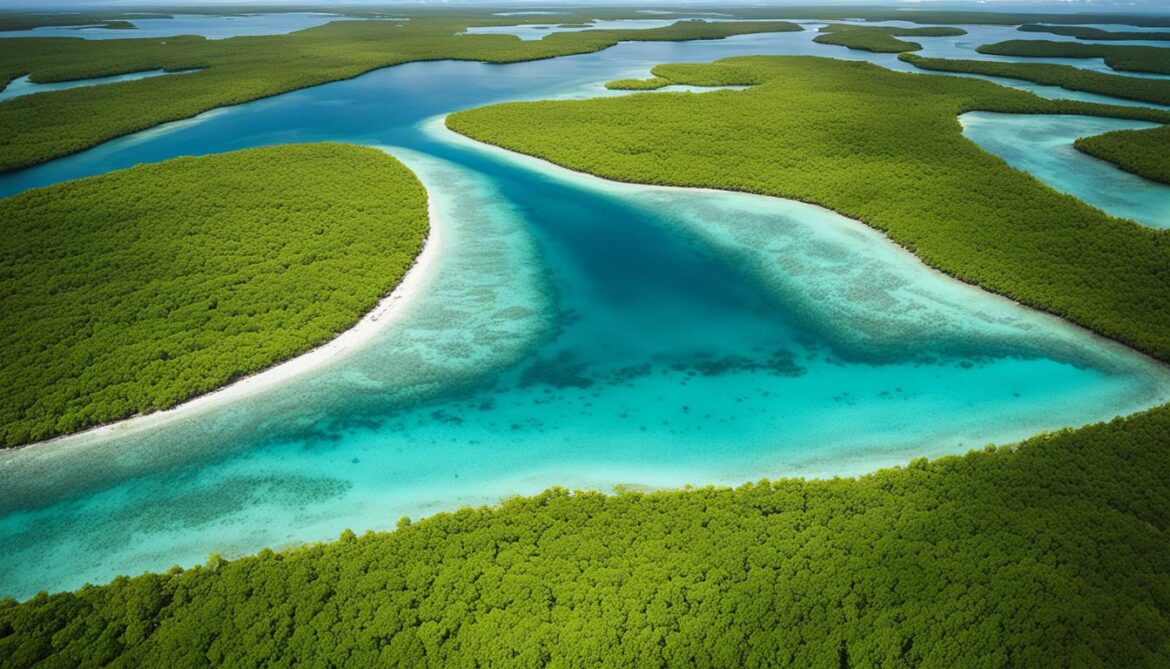
Protected Areas and National Parks in The Bahamas
The Bahamas is committed to preserving its natural heritage sites and biodiversity through the establishment of protected areas and national parks. These areas serve as crucial habitats for unique ecosystems and species found within the archipelago. The Bahamas National Trust, in collaboration with local communities and stakeholders, plays a vital role in the management and conservation of these protected areas.
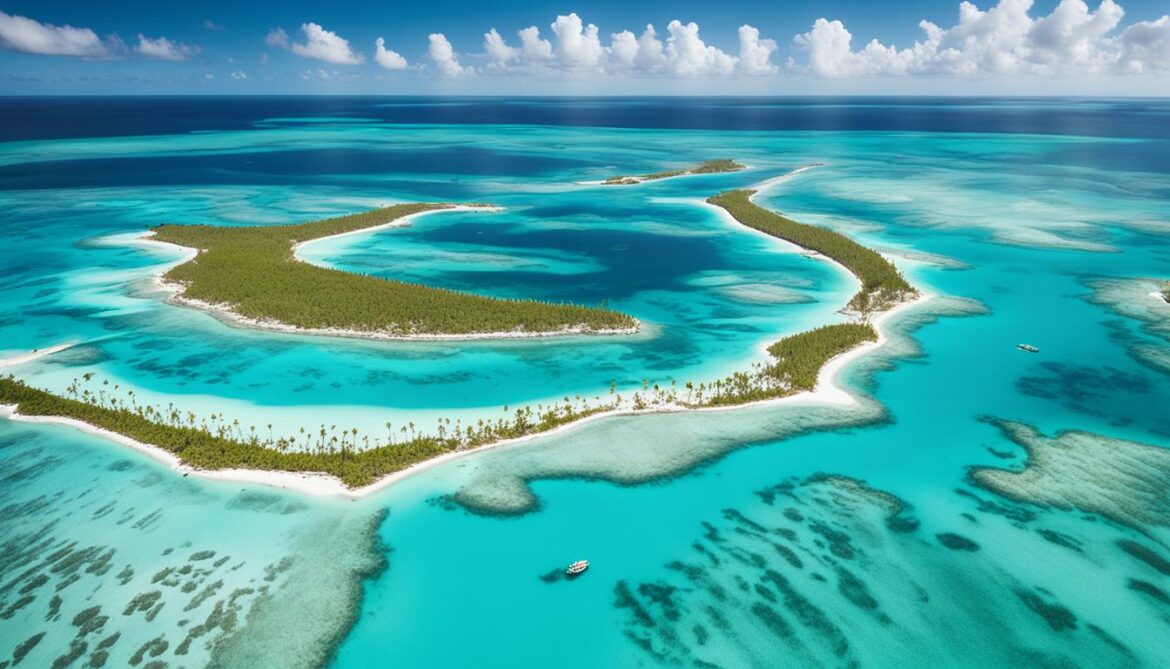
One of the prominent protected areas in The Bahamas is the Exuma Cays Land and Sea Park. It spans over 176 square miles and includes a breathtaking combination of pristine beaches, crystal-clear waters, and vibrant coral reefs. The park is home to diverse marine life, including endangered species such as the Bahama Parrotfish and Queen Conch. It offers visitors the opportunity to explore the rich underwater world through snorkeling and diving trips.
Another notable national park is the Pine Forest in Grand Bahama. This park provides a sanctuary for various endemic plant species, including the Bahama yellow elder and the Bahama maidenbush. It also serves as a critical habitat for bird species such as the Bahama swallow and the West Indian woodpecker. Nature enthusiasts can enjoy peaceful walks along the park’s trails, observing the unique flora and fauna that thrive in this lush environment.
The Bahamas is committed to preserving these protected areas and national parks through sustainable practices and strict regulations. These efforts aim to maintain the delicate balance between conservation and eco-tourism, ensuring that future generations can continue to experience the natural wonders of the islands.
Notable Protected Areas and National Parks in The Bahamas
| Name | Location | Main Features |
|---|---|---|
| Exuma Cays Land and Sea Park | Exuma Cays | Pristine beaches, coral reefs, diverse marine life |
| Pine Forest | Grand Bahama | Endemic plants, bird species, nature trails |
| Andros Barrier Reef | Andros | One of the largest barrier reefs, vibrant marine ecosystem |
| Inagua National Park | Inagua | Home to the Bahamas parrot, diverse bird species |
Sustainable Tourism in The Bahamas
The Bahamas is renowned for its eco-tourism attractions, offering visitors the opportunity to explore the country’s incredible natural beauty while prioritizing wildlife conservation and environmental protection. Sustainable tourism practices are actively promoted throughout the islands to preserve the delicate ecosystems and habitats that make The Bahamas so unique.
One of the main attractions for eco-tourists in The Bahamas is the diverse marine life found in its crystal-clear waters. Visitors can engage in activities such as snorkeling and diving to witness the vibrant coral reefs teeming with colourful fish and other fascinating marine creatures. These experiences not only provide unforgettable memories but also contribute to ongoing efforts to conserve and protect The Bahamas’ precious wildlife and their habitats.
Nature walks are another popular option for eco-tourists, allowing them to explore the lush landscapes and encounter the diverse flora and fauna that thrive in the islands. From dense mangroves to pristine forests, The Bahamas offers a variety of hiking trails and nature reserves that provide a glimpse into the country’s rich biodiversity. Guided tours led by knowledgeable local experts enhance visitors’ understanding of the unique ecosystems and the importance of their preservation.
The Bahamas also boasts breathtaking boat tours that take visitors to secluded cays and hidden beaches, offering a close-up view of the stunning coastal scenery. These tours provide an opportunity to spot wildlife, such as sea turtles, dolphins, and migratory birds, while learning about their conservation status and the efforts being made to protect their habitats.
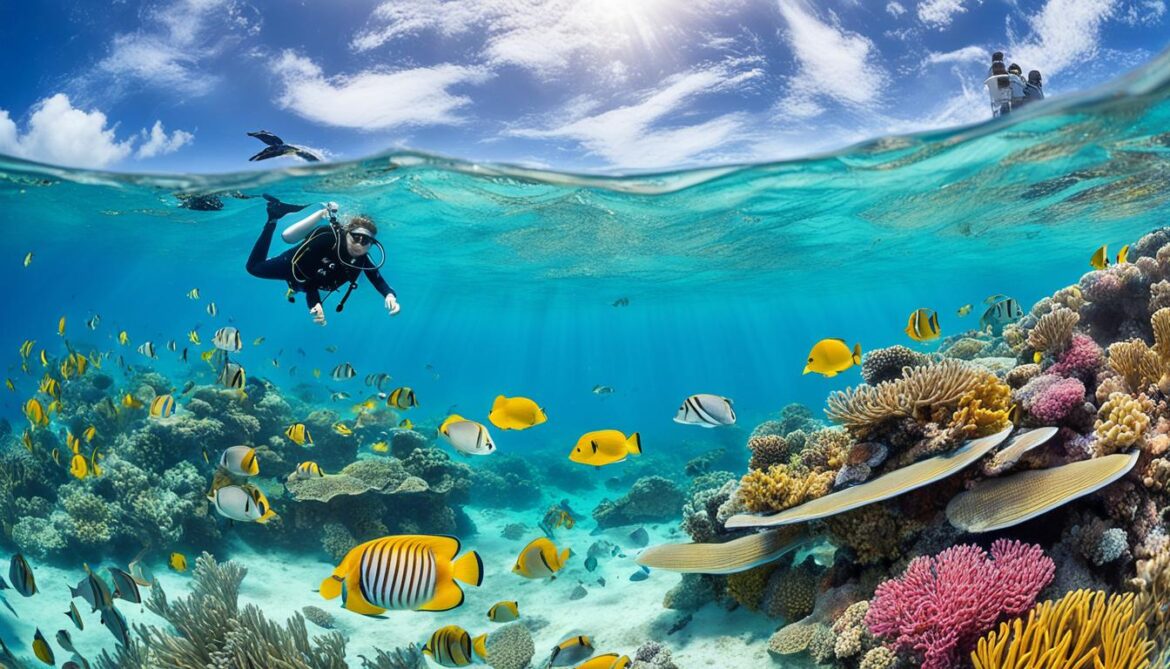
In line with sustainable tourism practices, accommodations in The Bahamas are increasingly adopting environmentally friendly initiatives. Many resorts and hotels have implemented energy-saving measures, waste reduction strategies, and water conservation programs to minimize their ecological footprint. By choosing eco-friendly accommodations, visitors can support these efforts and contribute to the overall sustainability of The Bahamas’ tourism industry.
“Sustainable tourism is not only about enjoying and appreciating the beauty of The Bahamas, but also about actively participating in its conservation. By practicing responsible tourism, visitors can make a positive impact on the environment and help protect the wildlife that makes our islands so special.” – Minister of Tourism, The Bahamas
In summary, sustainable tourism in The Bahamas offers a unique and rewarding experience for travelers while prioritizing wildlife conservation and environmental protection. Whether exploring the captivating underwater world, hiking through diverse landscapes, or embarking on boat tours, visitors can immerse themselves in the country’s natural wonders while contributing to the preservation of its ecological treasures.
Challenges and Threats to Biodiversity in The Bahamas
The Bahamas, with its diverse ecosystems and rich biodiversity, faces several challenges and threats that pose a risk to its delicate ecological balance. These issues require urgent attention and concerted efforts to safeguard the natural heritage of the islands.
Climate Change
One of the major challenges facing biodiversity in The Bahamas is the impact of climate change. Rising sea levels, increased frequency of hurricanes, and changing weather patterns pose a threat to the fragile coastal ecosystems and marine life. The warming of ocean temperatures also contributes to coral bleaching, which negatively affects the biodiversity of coral reefs, a vital component of the Bahamas’ ecosystems.
Habitat Loss
Unsustainable urban development, deforestation, and land degradation are leading to the loss of critical habitats in The Bahamas. As pristine natural areas are converted for infrastructure and agricultural purposes, the native flora and fauna suffer. Protecting and preserving these habitats is crucial for maintaining biodiversity and the ecological health of the islands.
Invasive Species
The introduction of invasive species poses a significant threat to the unique biodiversity of The Bahamas. Non-native plants and animals can outcompete native species for resources, disturb natural ecosystems, and disrupt ecological processes. Controlling and eradicating invasive species is essential to prevent further harm and protect the native flora and fauna.
Overfishing
Overfishing is another pressing issue that impacts biodiversity in The Bahamas. Unsustainable fishing practices, including illegal fishing and the depletion of fish stocks, disrupt marine food chains and degrade entire ecosystems. Implementing effective fisheries management strategies and promoting sustainable fishing practices are crucial for the long-term conservation of marine biodiversity.
| Challenges | Impact on Biodiversity |
|---|---|
| Climate Change | Threat to coastal ecosystems, coral bleaching |
| Habitat Loss | Loss of critical habitats, decline in native species |
| Invasive Species | Disruption of natural ecosystems, competition with native species |
| Overfishing | Depletion of fish stocks, disruption of marine food chains |
The government of The Bahamas, in collaboration with conservation organizations, is actively addressing these challenges through a multi-faceted approach that includes research, education, and community engagement. Efforts are being made to promote sustainable resource management, raise awareness about the importance of biodiversity conservation, and develop strategies to mitigate the impact of climate change.
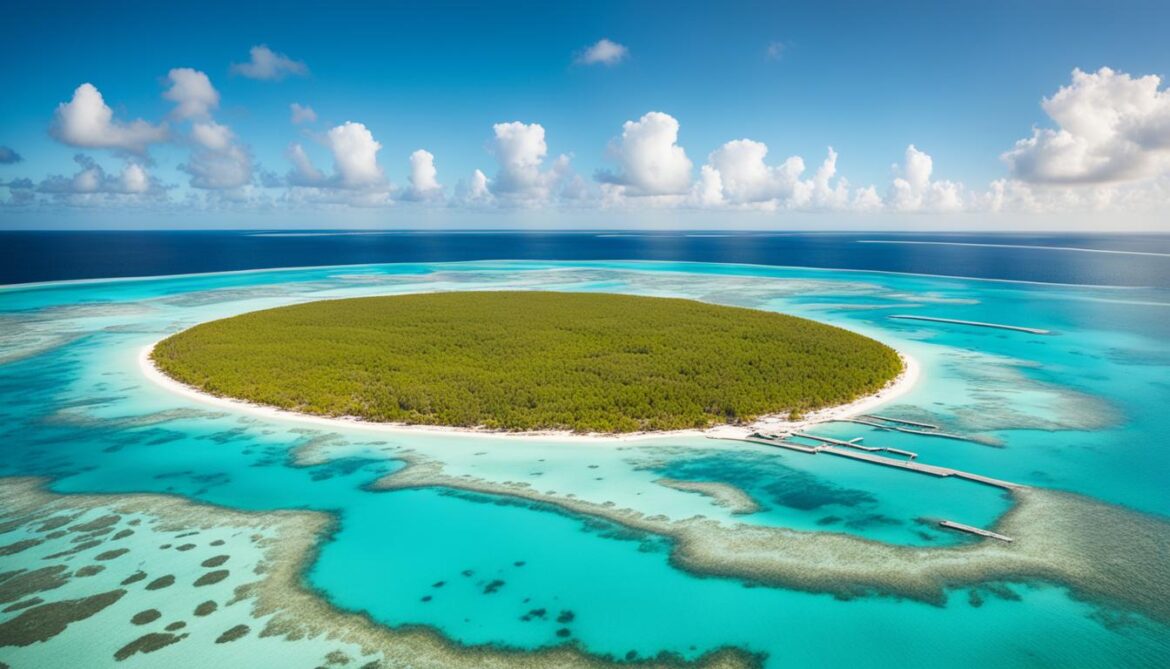
By prioritizing environmental protection and conservation, The Bahamas aims to ensure the long-term survival and resilience of its unique ecosystems. However, the collective efforts of the government, organizations, communities, and individuals are essential to overcome these challenges and protect the precious biodiversity that makes The Bahamas a truly remarkable natural wonder.
Research and Education in The Bahamas
The Bahamas is a hotspot for research and education in wildlife conservation and biodiversity. With its diverse range of unique species and ecosystems, the country offers numerous opportunities for scientists and scholars to delve into the fascinating world of wildlife and conservation.
Through dedicated research projects, experts study the intricacies of Bahamas’ wildlife and its important role in maintaining the delicate balance of its ecosystems. These projects cover a wide range of topics, including the behavior, ecology, and habitats of various species found in the Bahamas. By gaining a deeper understanding of these intricacies, researchers can contribute to the conservation efforts in the region.
In addition to research, education plays a crucial role in raising awareness and building capacity among local communities and students. Educational programs and workshops are organized to inspire a love for nature and instill a sense of responsibility towards protecting the precious biodiversity of the Bahamas. Students and community members have the opportunity to learn about the unique species that inhabit their surroundings and the importance of conservation.
Research and education go hand in hand in nurturing a culture of conservation in The Bahamas. By arming individuals with knowledge and understanding, we empower them to take an active role in preserving our natural heritage.
Bahamas Wildlife Conservation Programs
A variety of local and international organizations actively participate in wildlife conservation programs in The Bahamas. These programs aim to protect and restore the habitats of endangered species, implement sustainable practices, and educate the public about the importance of conserving the country’s wildlife.
| Organization | Mission |
|---|---|
| Bahamas National Trust | To conserve and manage the natural and historic resources of The Bahamas |
| Dolphin Cay | To rescue, rehabilitate, and release marine mammals and promote environmental education |
| Exuma Foundation | To protect and enhance the natural environment of the Exuma Cays Land and Sea Park |
| Bahamas Marine Mammal Research Organization | To conduct scientific research and promote conservation of marine mammals in The Bahamas |
These organizations collaborate with local communities, academic institutions, and government agencies to achieve their conservation goals. By working together, they can make a significant impact on the protection and preservation of Bahamas’ wildlife.
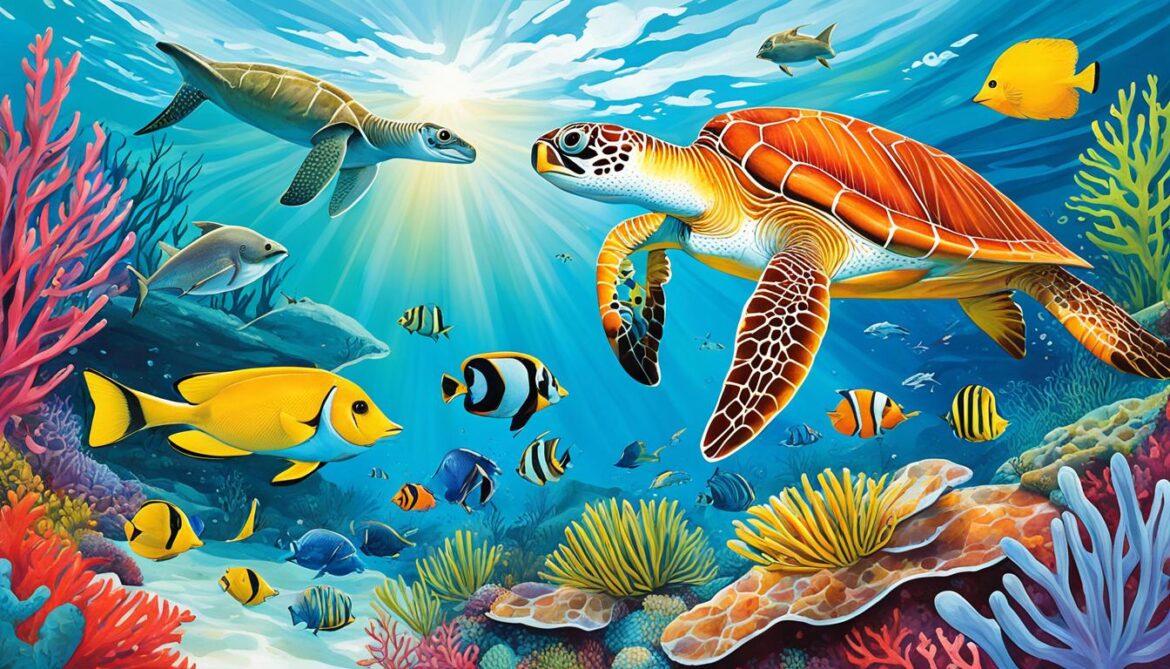
Research and education are vital components of the ongoing efforts to conserve the rich biodiversity of The Bahamas. By investing in knowledge and spreading awareness, we can ensure the long-term survival of the remarkable wildlife found within these islands.
Collaboration and Partnerships for Conservation
Collaboration and partnerships are integral to the conservation efforts in The Bahamas, as they bring together various stakeholders to work towards a common goal. The government, non-governmental organizations (NGOs), local communities, and international agencies join forces to protect the sacred natural sites and promote sustainable development in the country.
The Bahamas National Trust, in collaboration with international organizations such as the International Union for Conservation of Nature (IUCN), plays a pivotal role in facilitating these partnerships. Through their efforts, a coordinated approach to conservation is fostered, enabling effective management and preservation of the country’s natural resources.
These partnerships allow for the sharing of knowledge, expertise, and resources, increasing the effectiveness of Bahamas’ conservation efforts. By working together, stakeholders can implement comprehensive conservation strategies and achieve long-term environmental protection goals.
“Collaboration is key to successful conservation. Together, we can make a significant impact in protecting The Bahamas’ unique natural heritage for present and future generations.” – Bahamas National Trust
The Role of Government and NGOs
The government of The Bahamas plays a crucial role in providing the legal framework and resources needed for conservation efforts. It establishes policies, regulations, and protected areas to ensure the preservation of sacred natural sites and biodiversity. NGOs, on the other hand, actively engage in on-the-ground initiatives, raising awareness, conducting research, and implementing conservation projects.
One example of successful collaboration is the partnership between the Bahamas National Trust and the IUCN. The Bahamas National Trust, as the statutory body responsible for managing and conserving national parks, protected areas, and natural sites, works closely with the IUCN to align conservation strategies with international best practices and guidelines.
Sustaining Local Engagement
Local communities in The Bahamas play a significant role in conservation efforts. Their traditional knowledge, practices, and connection to the land are invaluable for effective resource management. Collaborative partnerships ensure that local communities are actively involved in decision-making processes and receive the necessary support to implement conservation initiatives.
Furthermore, partnerships with local communities contribute to the development of sustainable livelihoods through eco-tourism initiatives. By promoting responsible tourism practices, these partnerships generate economic opportunities while prioritizing environmental protection and cultural preservation.
International Collaboration for Global Impact
The conservation efforts in The Bahamas extend beyond national boundaries. The country actively engages in international collaborations and partnerships to address global environmental challenges. By sharing experiences, knowledge, and best practices with other countries, The Bahamas contributes to the collective efforts for global biodiversity conservation and environmental protection.
International organizations, such as the IUCN, facilitate these collaborations by providing platforms for exchanging ideas, conducting research, and implementing joint projects. Through international partnerships, The Bahamas can leverage expertise and resources to enhance its conservation efforts and ensure the long-term sustainability of its natural heritage.
The Way Forward
Collaboration and partnerships will continue to be fundamental in The Bahamas’ conservation efforts. By strengthening existing collaborations, forging new partnerships, and engaging all stakeholders, the country can navigate the challenges of environmental protection and sustainable development.
Through collective action and shared responsibilities, The Bahamas can achieve its conservation goals, preserving its sacred natural sites, protecting its biodiversity, and securing a sustainable future for generations to come.
International Collaborations for Bahamas Conservation Efforts
| Organization | Nature of Collaboration |
|---|---|
| IUCN | Guidance and technical support for conservation strategies and management of protected areas |
| Nature Conservancy | Collaborative projects to restore and protect marine ecosystems |
| World Wildlife Fund (WWF) | Capacity-building initiatives and support for sustainable fisheries management |
| Coral Reef Alliance | Partnerships for coral reef conservation and community engagement |
| Caribbean Biodiversity Fund | Financial support for biodiversity conservation projects in The Bahamas |
Future Outlook for Conservation in The Bahamas
The future of conservation in The Bahamas holds tremendous promise and commitment from both the government and local communities. Their shared goal is to preserve the country’s natural heritage sites and maintain its rich biodiversity. To achieve this, efforts are underway to integrate biodiversity considerations into sectoral plans, policies, and projects.
Regional partnerships and collaborative projects are also being explored to enhance the collective effort towards conservation. By working together, stakeholders can leverage their knowledge and resources, leading to more effective conservation initiatives. This collaborative approach ensures that no one is left behind in the journey towards a sustainable Bahamas.
Furthermore, continuous research and education are essential for the long-term survival of the sacred natural sites and diverse ecosystems in The Bahamas. Ongoing scientific investigations deepen our understanding of the unique flora and fauna found in the archipelago, thereby informing conservation strategies and policies to mitigate potential threats.
“Conservation is not just a short-term commitment; it requires fostering a culture of conservation through education,” says Dr. Samantha Green, a leading environmental researcher in The Bahamas.
Sustainable practices are crucial for the future of conservation efforts in The Bahamas. By promoting sustainable development, the country can strike a balance between economic growth and environmental protection. Through responsible resource management, renewable energy adoption, and ecotourism practices, The Bahamas can pave the way for sustainable development while preserving its natural heritage sites.
Benefits of Sustainable Development in The Bahamas
A focus on sustainable development brings numerous benefits to The Bahamas. By integrating sustainability principles across sectors, a prosperous future can be built:
- Preservation of biodiversity and ecosystems
- Protection of sacred natural sites
- Enhancement of eco-tourism attractions
- Conservation of marine and terrestrial wildlife
- Safeguarding of natural resources for future generations
By maximizing the potential of sustainable development, The Bahamas can continue to be a leading example of environmental stewardship and inspire other nations to prioritize conservation efforts.
Image: A pristine coral reef in The Bahamas, showcasing the beauty and fragility of marine ecosystems. (Source: Navin Rajagopalan / Shutterstock)
Conclusion
The Bahamas showcases the successful integration of conservation and eco-tourism to protect sacred natural sites and preserve biodiversity. The country’s dedicated conservation efforts, sustainable development practices, and community engagement serve as a blueprint for other nations seeking to balance environmental protection with economic growth.
The preservation of the Bahamas’ natural heritage sites and diverse ecosystems is not only vital for the well-being of local communities, but also for the global ecosystem as a whole. These sacred natural sites hold cultural and spiritual significance, making their conservation even more crucial.
Through ongoing collaboration and the implementation of sustainable practices, the Bahamas can continue to lead the way in conservation efforts worldwide. By promoting eco-tourism attractions and prioritizing wildlife conservation, the country provides visitors with an opportunity to experience its unique biodiversity while contributing to the protection and sustainable development of this magnificent archipelago.







